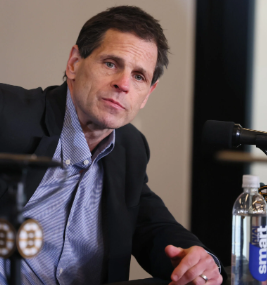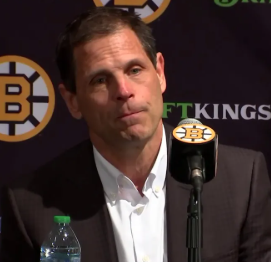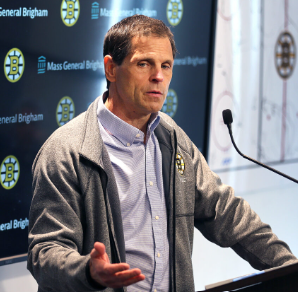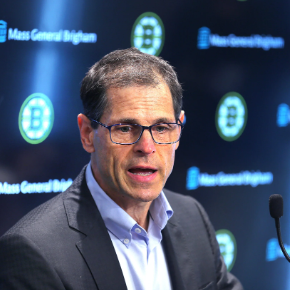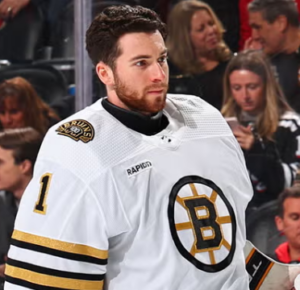The Boston Bruins face a pivotal moment in their history. With a faltering team and an aging core, the organization must make bold decisions to secure its future.
Mike Grinnell’s suggestion to consider Jamie Langenbrunner as a replacement for Don Sweeney is a compelling proposition that merits serious consideration.
Langenbrunner’s proven track record in player development, coupled with his intimate knowledge of the Bruins’ operations, makes him a strong candidate to lead the team through this transitional phase.
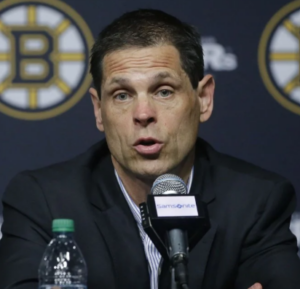
Also Read: Bruins GM Don Sweeney’s Liar Accusation, Ryan Whitney Responds on It and More
Also Read: Jack Sweeney: The Tracker Expert of Elon Musk’s Jet Now Tracking Kim Kardashian’s Plane
Jamie Langenbrunner as an Alternative for Don Sweeney
The Boston Bruins’ Struggles Continue
The Boston Bruins are enduring one of their most challenging stretches in recent memory.
Following a fifth consecutive loss, a 5-0 thrashing at home by the Edmonton Oilers, the frustration of the fanbase reached a boiling point.
Boos echoed through TD Garden, and chants calling for general manager Don Sweeney’s firing reverberated in the aftermath of the game.
This string of poor performances has brought Sweeney’s leadership into question, especially in light of his decision to part ways with head coach Jim Montgomery and replace him with Joe Sacco. Instead of revitalizing the team, these moves have coincided with an alarming slump, leaving fans and analysts alike clamoring for answers.
The Case Against Don Sweeney
The spotlight on Sweeney’s tenure has intensified, with critics pointing to his inability to foster a sustainable pipeline of young talent.
The Bruins’ aging core, once the backbone of their success, is now approaching retirement. With no clear succession plan in place and questionable administrative decisions compounding the team’s woes, the organization faces a precarious future.
Fans and pundits alike are questioning whether Sweeney has the vision and competence to navigate this turbulent period. His track record of trades, drafts, and managerial decisions has come under intense scrutiny.
A leadership change, some argue, is the first step toward revitalizing the storied franchise.
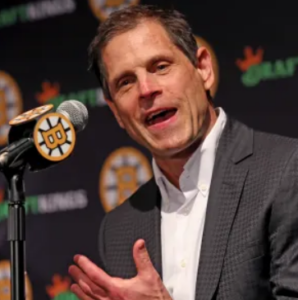
Don Sweeney: The Need for Change in Leadership
The Bruins’ struggles underscore the necessity of rethinking their leadership structure.
For years, the team relied on veterans like Patrice Bergeron, Brad Marchand, and David Krejci to maintain their competitive edge. However, with these stalwarts nearing the end of their careers, the team’s lack of young talent has become glaringly evident.
Ineffective administration under Sweeney has only exacerbated this issue. Questionable draft picks, missed opportunities in free agency, and underwhelming trades have hindered the team’s ability to build a sustainable future.
Bringing in a leader like Langenbrunner, who has a proven track record in talent development, could be the catalyst the organization needs.
Lessons from Other Teams’ Rebuilds
The Bruins could take inspiration from other NHL franchises that successfully navigated rebuilds by embracing bold changes in leadership.
Teams like the New York Rangers and Colorado Avalanche underwent transformative periods by investing in young talent and appointing forward-thinking executives.
For instance, the Rangers’ decision to prioritize a youth movement under new management resulted in a rejuvenated roster and playoff success.
Similarly, the Avalanche’s focus on analytics-driven decisions and a clear development strategy turned them into Stanley Cup champions. These examples illustrate the potential benefits of a fresh approach to management.
Also Read: Jack Sweeney: The Tracker Expert of Elon Musk’s Jet Now Tracking Kim Kardashian’s Plane
